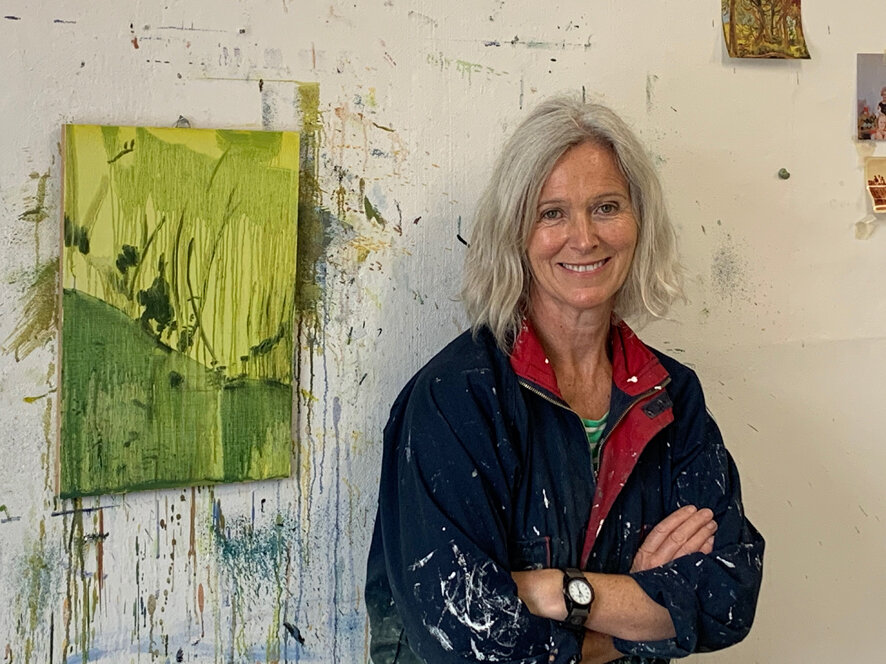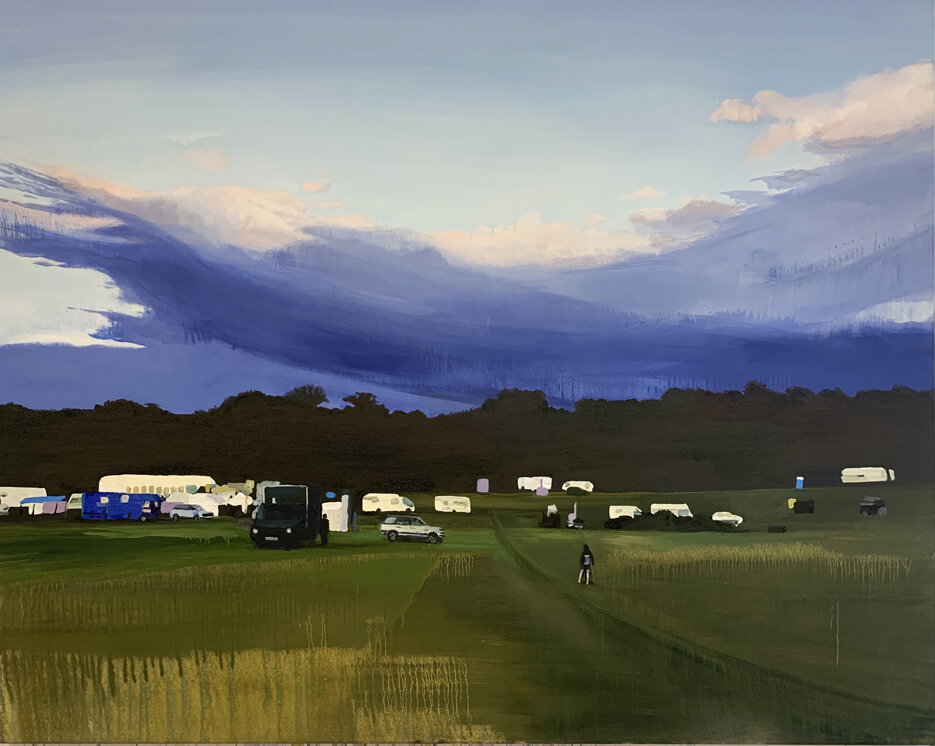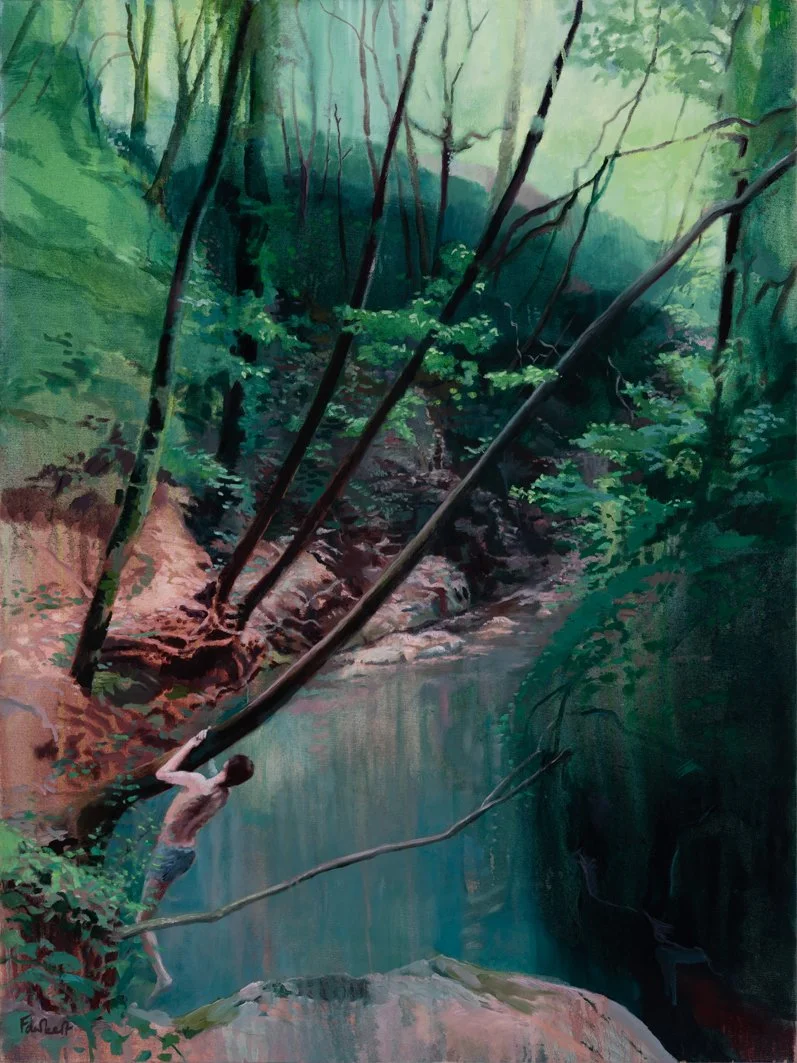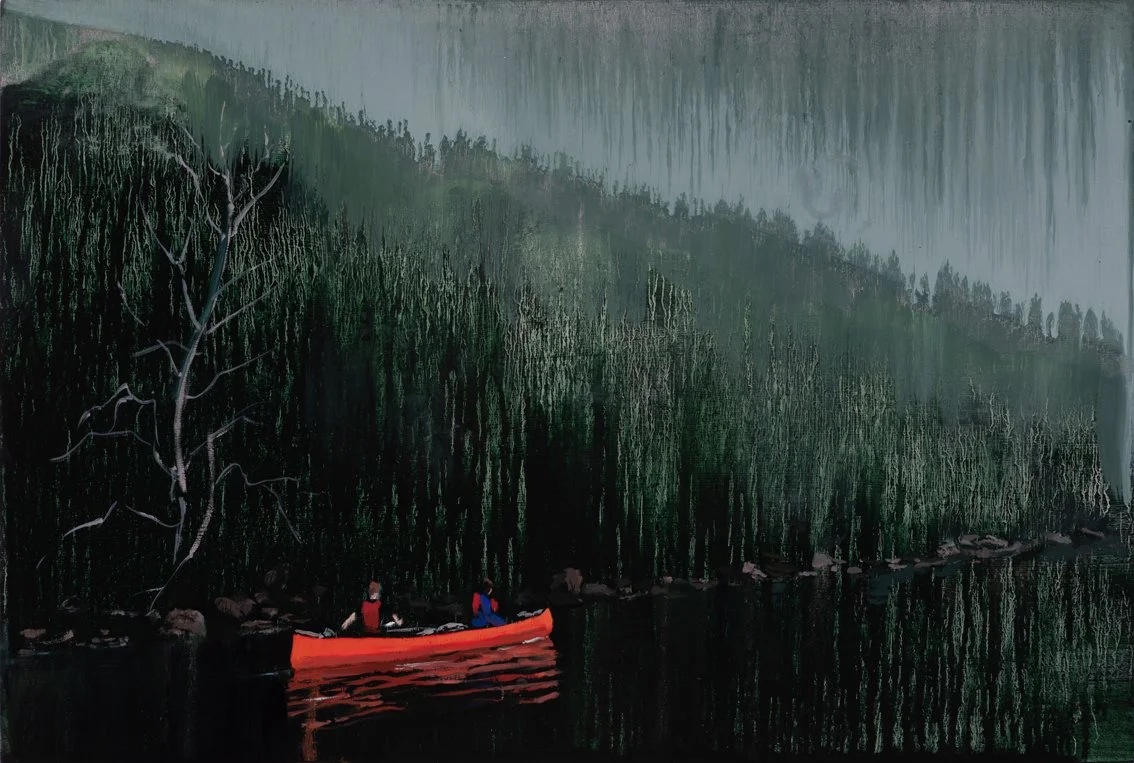About Steph’s work
Stephanie Fawbert is an artist whose landscape and figurative paintings reflect on human courage, survival and vulnerability within natural landscapes. Her paintings suggest an idyll but a place that is also about the unknown and that nature is not always benign or beautiful.
By the River, oil on canvas, 40 x 50cm
The figures in her paintings are immersed in nature, in their own solitude, but also vulnerable and exposed… The work is about that unpredictability of existence in the ‘natural world’ and a sense of anxiety and quiet dramas that can lie within these seemingly perfect lush environments.
Holiday Homes, oil on canvas, 40 x 40cm, oil on canvas
Even though the pieces celebrate nature and our place in it, the paintings are not a nostalgic journey into times gone by, looking back to scenes of an idealised past, but an exploration of an interior world which reflects ideas of both connection and disconnection with nature, a grappling with time and mortality. More recent body of work hints at more hopeful relationships, a reciprocity between humans and the world around them.
rural fair, oul on canvas, 120 x 152cm
There is a tension to her paintings, which comes, in part, from the vulnerability of her figures. Often alone and small, we sense their aloneness and empathise. They are dwarfed in the landscapes they inhabit and this playing with scale brings out their vulnerability. Similarly, the narrative of the paintings, in which the figures are depicted crossing landscapes, on foot, by canoe, poised on the edge of riverbanks, or swimming in dark tracts of water suggests psychological challenge- a stepping into the unknown.
frozen tarn, oil on canvas, 120 x 152cm
In ‘Riverbank’ the figure of a young man hangs on to an overhanging tree as he negotiates a riverbank. The natural world looks like a paradise but one in which he could disappear at any moment into the turquoise depths of the river below. In ‘Green Canoe’, the two figures in the canoe move through a murky watery in an ill-defined country. Are they on a bracing day out, or figures on a quest into unknown waters? Fawbert uses the canoe repeatedly in her work - as a metaphor for both play and fragility - of life in the balance. And the water she depicts, with its reflections, ripples and movement, proposes risk, change and hidden undercurrents. Likewise, mobile homes, prefabricated houses and caravans feature in her work as a metaphor for impermanence. Indeed, Fawbert has claimed that the motifs that come up in her work are about a dialogue with mortality, the brevity and therefore preciousness of life.
Riverbank, oil on canvas, 101 x 76cm
The scenes Fawbert paints are not recognisable places and yet connect us to place. They are both anonymous and familiar and they take us to a place of collective revery and memories in which the physicality of the paint, with drips and washes, intensifies the world depicted in them.
Along the Shoreline, oil on gesso board, 41 x 61cm
Fawbert is looking at how our interior world is shaped and takes its cues from the exterior world around us. The paintings she makes are about the interaction between the two. Perhaps they are “not a place, but a proposition”(1) a signifier of desire’ in this case, a longing to connect, both to our past, and to our present.
(1) ‘I Will Meet You There - desire and longing in the paintings of Sue Williams A’ Court’ by Graham Crowley






